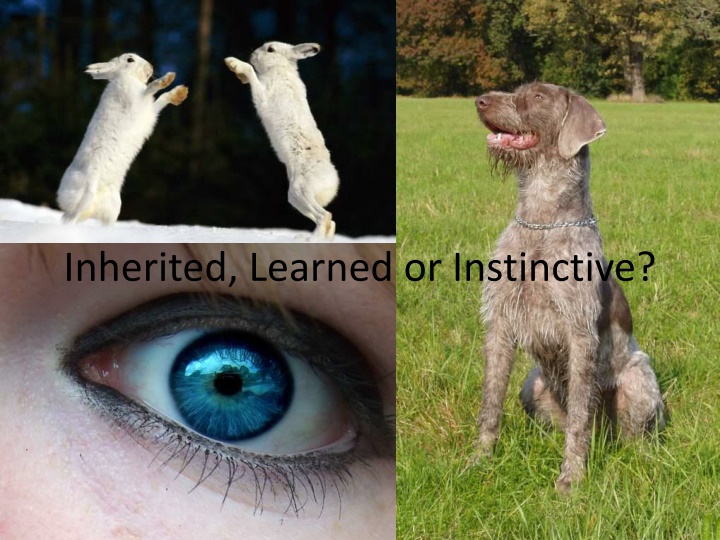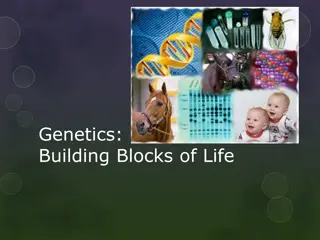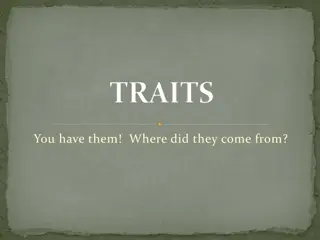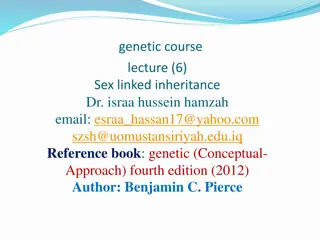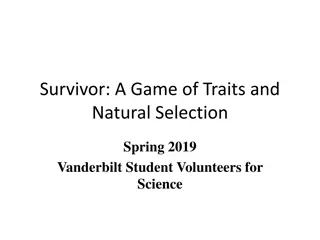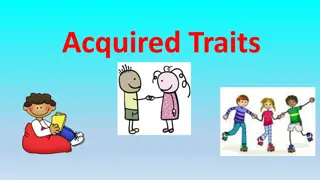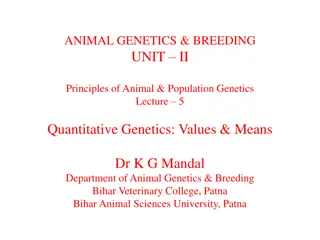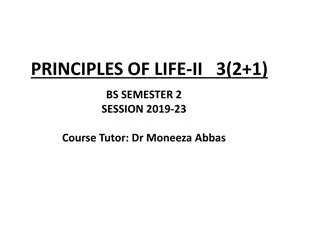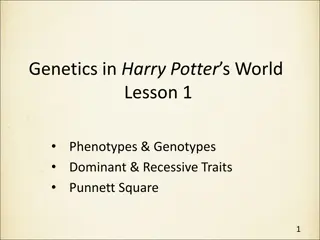Inherited, Learned, and Instinctive Traits in Organisms
Traits in organisms can be inherited, learned, or instinctive. Inherited traits are genetic and include characteristics like hair color and disease predispositions. Instinctive traits are inherent behaviors such as sleeping and grooming. Learned traits are behaviors acquired for survival, like housebreaking in pets. Recognizing and differentiating these traits help understand the complexities of genetics and behavior in various species.
Download Presentation

Please find below an Image/Link to download the presentation.
The content on the website is provided AS IS for your information and personal use only. It may not be sold, licensed, or shared on other websites without obtaining consent from the author.If you encounter any issues during the download, it is possible that the publisher has removed the file from their server.
You are allowed to download the files provided on this website for personal or commercial use, subject to the condition that they are used lawfully. All files are the property of their respective owners.
The content on the website is provided AS IS for your information and personal use only. It may not be sold, licensed, or shared on other websites without obtaining consent from the author.
E N D
Presentation Transcript
Inherited Traits Are part of a creature s genetic structure We are born with these traits They depend on the genetic code of our parents and grandparents
Make a list of some traits you can think of that are inherited.
Examples Hair and eye color, skin color, height and predisposition to some diseases are all inherited traits
Instinctive Traits The inborn complex behavior of any given organism that is not learned, but inherited, making them very unique behavior traits Examples: Behaviors like sleeping and grooming.
Make a list of instinctive traits you know.
Examples The archer fish spits streams of water up at insects in overhanging trees causing the insects to fall into the water where they can be consumed
Examples continued When the leatherback turtles hatch, the hatchlings immediately scamper for the ocean.
Learned Traits Behavioral traits obtained by a given organism to correspond with its environment and its survival needs. These traits must be learned in the organism s. These behaviors are often forced upon the given organism in order to enrich survival
Make a list of learned traits that you know.
Examples Some dogs kept as pets are housebroken, it is not a trait or skill with which they are born. In humans, the instinct to avoid pain or injury is a skill that is learned throughout infancy, which is why human babies can be so vulnerable to hazardous obstacles around the home.
PAUSE HERE!! THIS IS WHERE THE ACTIVITY STARTS
Activity Rules 1. Students will be shown several images with a little bit of information about the image. 2. Individually they will jot down (using a PEN) on a piece of paper whether they think the image represents a learned or instinctive trait and why they chose that answer. 3. They will hand this in at the end of class. 4. The answers will be shown after every one has put down their PENS. 5. On some slides the answer will be followed by notes. OK GO!!!
Instinctive or learned? Birds such as pigeons or hummingbirds, have an innate sense that flying is a natural act. Does this mean that flight is instinctive or learned? If you said instinctive, you are right! Flight in birds is similar to toddlers learning to walk. They both have an instinct that flight and standing upright are natural goals to achieve. They achieve these goals through practice and their natural instincts.
Instinctive or learned? A dog sitting on command. Is this instinctive or learned? Learned! Right! The dogs owners teach them to sit.
Instinctive or learned? A spider spins webs to live and catch food. Is this instinctive or learned? Instinctive! Good Job Spiders can produce silk from the moment they are born and it is their instinct to spin a web.
Instinctive or learned? Cougar cubs hunting. Instinctive or learned? Learned and instinctive. Right! It is instinctive for them to hunt but they fine tune their hunting through learning.
Instinctive or learned? A beaver cuts down trees and uses those trees to build dams. Is this instinctive or learned? Instinctive! You re awesome!!
Instinctive or learned? Fawns being afraid of humans. Instinct or learned? Learned. Correct! A mother deer will teach the fawn to fear man by demonstrating fear at the sight or scent of man. This type of learning is also seen in wolves. The she-wolf will show great fear the first time she comes near a trap with her cubs. This teachers her babies that traps are to be avoided.
Instinctive or learned? Dog barking. Instinctive or learned? You are right if you said instinctive! Dogs bark because it is instinctive to do so. Dogs bark to communicate. They bark to warn of territory encroachment or danger.
